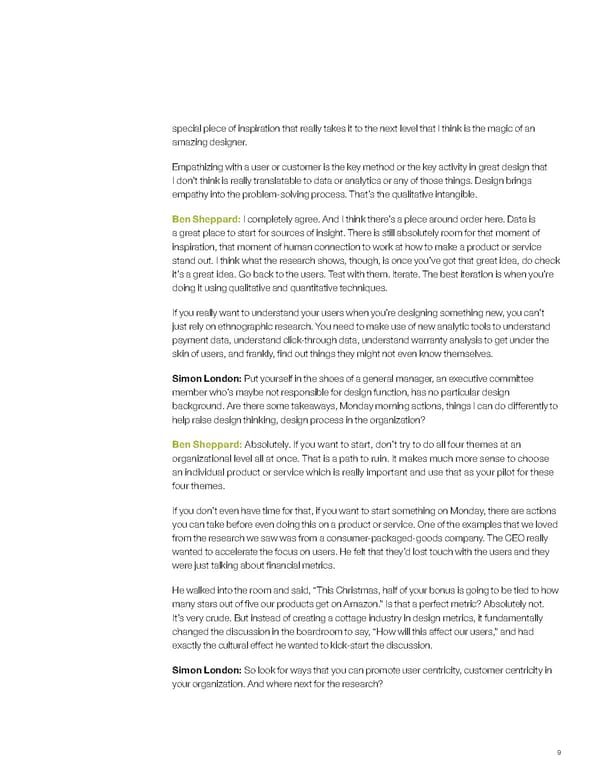special piece of inspiration that really takes it to the next level that I think is the magic of an amazing designer. Empathizing with a user or customer is the key method or the key activity in great design that I don’t think is really translatable to data or analytics or any of those things. Design brings empathy into the problem-solving process. That’s the qualitative intangible. Ben Sheppard: I completely agree. And I think there’s a piece around order here. Data is a great place to start for sources of insight. There is still absolutely room for that moment of inspiration, that moment of human connection to work at how to make a product or service stand out. I think what the research shows, though, is once you’ve got that great idea, do check it’s a great idea. Go back to the users. Test with them. Iterate. The best iteration is when you’re doing it using qualitative and quantitative techniques. If you really want to understand your users when you’re designing something new, you can’t just rely on ethnographic research. You need to make use of new analytic tools to understand payment data, understand click-through data, understand warranty analysis to get under the skin of users, and frankly, find out things they might not even know themselves. Simon London: Put yourself in the shoes of a general manager, an executive committee member who’s maybe not responsible for design function, has no particular design background. Are there some takeaways, Monday morning actions, things I can do differently to help raise design thinking, design process in the organization? Ben Sheppard: Absolutely. If you want to start, don’t try to do all four themes at an organizational level all at once. That is a path to ruin. It makes much more sense to choose an individual product or service which is really important and use that as your pilot for these four themes. If you don’t even have time for that, if you want to start something on Monday, there are actions you can take before even doing this on a product or service. One of the examples that we loved from the research we saw was from a consumer-packaged-goods company. The CEO really wanted to accelerate the focus on users. He felt that they’d lost touch with the users and they were just talking about financial metrics. He walked into the room and said, “This Christmas, half of your bonus is going to be tied to how many stars out of five our products get on Amazon.” Is that a perfect metric? Absolutely not. It’s very crude. But instead of creating a cottage industry in design metrics, it fundamentally changed the discussion in the boardroom to say, “How will this affect our users,” and had exactly the cultural effect he wanted to kick-start the discussion. Simon London: So look for ways that you can promote user centricity, customer centricity in your organization. And where next for the research? 9
 Tapping into the business value of design Page 8 Page 10
Tapping into the business value of design Page 8 Page 10